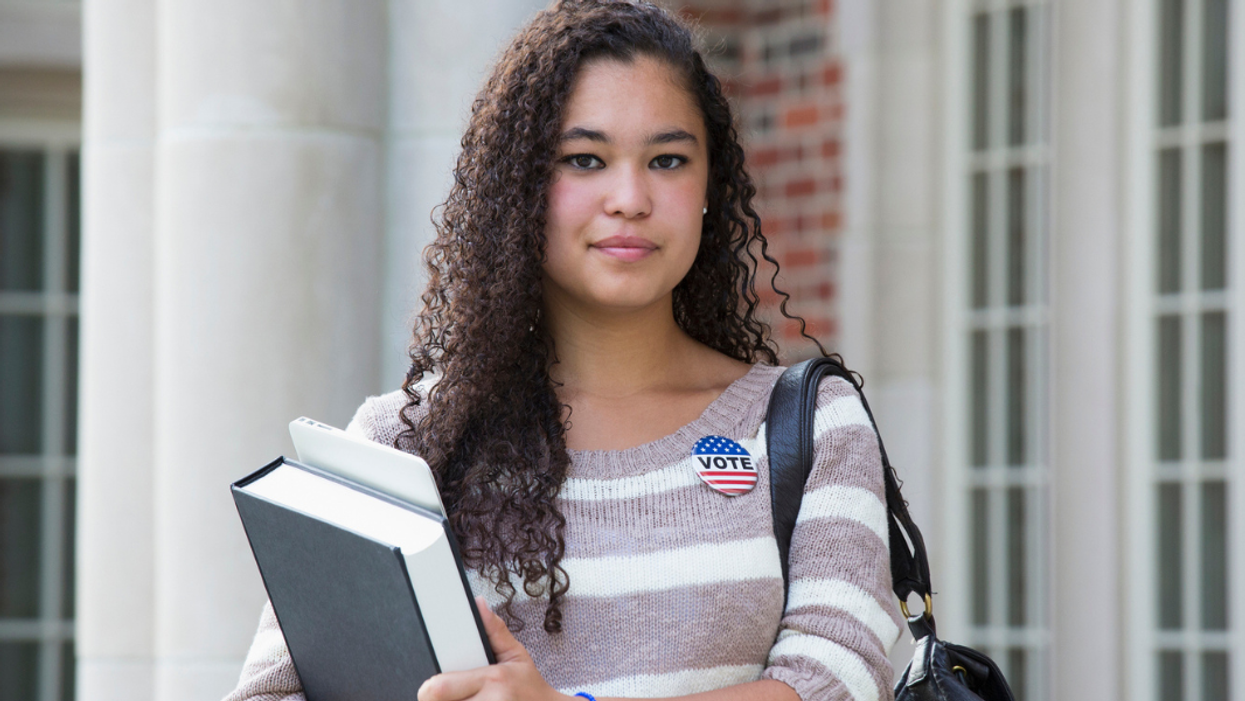Clarissa Unger is the Co-Founder and Executive Director of the Students Learn Students Vote Coalition.
Jen Domagal-Goldman is the Executive Director of the ALL IN Campus Democracy Challenge.
Mike Burns is the National Director for Fair Elections Center’s Campus Vote Project.
As institutions of higher education everywhere prepare for the fall term, their students’ right to vote is under attack.
In 2023 alone, state legislatures have passed and proposed laws that would ban the use of student IDs at polling places, ban polling places on college campuses, or would effectively prohibit out-of-state college students from voting where they attend school. More efforts will surely emerge between now and the 2024 presidential election as some lawmakers seek to influence its results through voter suppression.
What makes these efforts so disheartening is that they take aim at arguably our country’s most successful pro-democratic movement of the last decade - surging youth voter participation, led by historic voter turnout among eligible college students.
For decades conventional wisdom, backed by data, was that college students don’t vote. Then, according to Tufts University’s Institute for Democracy & Higher Education, from the 2014 midterm elections to 2018, college student voter turnout more than doubled. In 2020, college student voter turnout reached 66%, matching the overall population’s turnout rate while increasing at twice the rate of all voters compared to 2016. While student-specific voting rates in the 2022 midterms won’t be known until later this year, ample data suggests high youth voter turnout, buoyed by strong student voter participation.
These increases, which have outpaced the macro trends of the overall voting population, coincide with an extraordinary proliferation of institutional support aiding students in becoming voters. These impactful efforts include a national nonpartisan coalition founded in 2016 with about 300 local, state and national partners committed to growing the student vote on college campuses; more than 500 nonpartisan campus voting coalitions that drafted democratic engagement action plans over the last election cycle; commitments to work toward 100% student voter participation by nearly 600 university presidents; training hundreds of students to be voting rights advocates, and guidance and encouragement from the U.S. Department of Education.
Ideally, the rise of a young, new, and influential section of the electorate - one with more racial diversity and less party loyalty than past generations - would inspire all politicians to prioritize winning their votes over suppressing them. By appealing to these voters and implementing pro-democracy measures such as expanding access to vote-by-mail, automatic voter registration, and putting polling sites on college campuses, political parties and candidates could strengthen both the future of our country’s democracy and their electoral prospects for years to come. By tracking, advocating, and imagining how to design our democracy to meet the needs of young and student voters, including with model legislation, student voter advocates have already demonstrated a way forward.
Instead, bad-faith actors in leadership positions are attempting to prevent these eligible voters from casting ballots at all. They are motivated purely by short-term political gain, and many of their proposed and implemented measures, such as restrictions on acceptable ID and early voting, would disproportionately impact Black and Latino students by exacerbating barriers that already make voting more difficult for people of all ages in their communities. Cursory attempts to justify these measures with lies about voter fraud or lack of patriotism should not distract from what they really are: intentional efforts to systematically suppress the democratic rights of young voters - especially young voters of color.
If these measures succeed in making voting more difficult for young people, they could do long-term damage to our democracy. Research shows engaging and encouraging young people to engage with elections leads to greater participation. By stripping away the protections and practices that make voting accessible to college students, bad-faith actors send the exact wrong message to our youngest, most diverse generation. As Mae Roos, a Boise high school senior, testified at a February 10 hearing regarding Idaho’s now-enacted student ID removal bill, “When we’re taught from the very beginning, when we first start trying to participate, that voting is an expensive process, an arduous process, a process rife with barriers, we become disillusioned with that great dream of our democracy,” Ms. Roos said. “We start to believe that our voices are not valued.”
An absence of government support or acceptance leaves institutions of higher learning in a crucial position to prevent new, young voters from becoming “disillusioned.” Even after the extraordinary proliferation of institutional support for student civic engagement in recent years, universities, especially those in states that suppress the student vote, must consider going above and beyond in order to protect their students’ fundamental democratic rights. That means working to ensure students understand their rights, have the resources and guidance necessary to navigate evolving voting laws, and advocating as an institution for legitimacy and fair access for student voters.
This begins by pointing out to leaders intent on disenfranchising them that college students bring youth, diversity, and innovation to their campuses and surrounding communities, and their institutions are often crucial economic drivers in their regions. They also bear the consequences of public officials and government offices that oversee their schools and touch their lives as residents of their campus communities. This includes the approximately 20% of college students who attend school out-of-state, whose right to choose where they vote is protected under the 26th Amendment.
Voting access isn’t partisan - it’s a fundamental democratic right, one that institutions of higher learning must help protect as they foster learning environments for students to develop their civic identities. Too many politicians have shown they’re willing to pervert democracy for short term partisan gain, even if it risks damaging our country and alienating a generation of voters. To foster a healthy and thriving democracy and country, it’s up to the entire higher education community to counteract these efforts by building nonpartisan pathways for the newest members of our democracy to become civically and politically engaged.


















